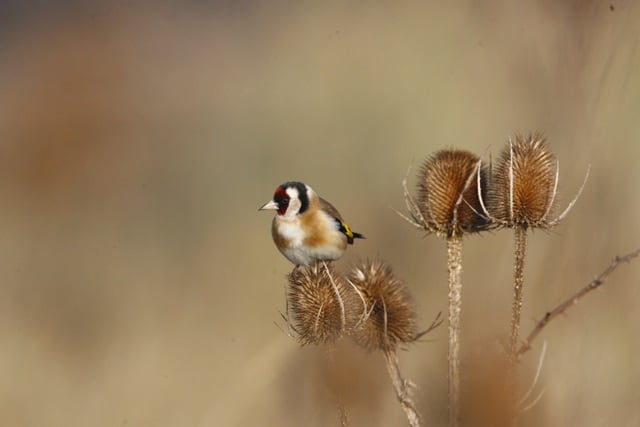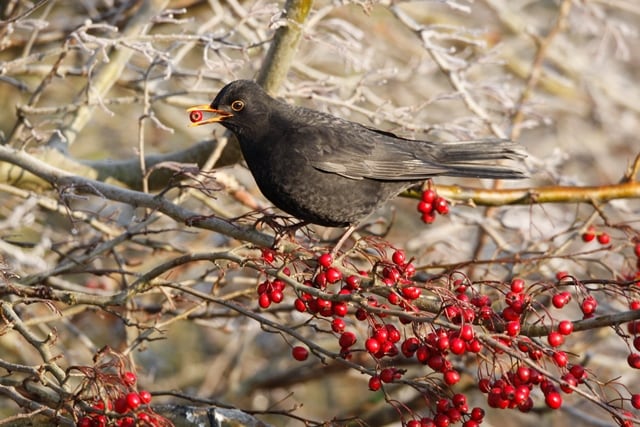Suitable Habitat

Although just putting out the right food and clean water will attract a certain number of birds to your garden, more can be attracted - and might make their home there - if you provide the right sort of habitat.
The size of your garden will have a major bearing on how much and what sort of habitat you can create, but even a small garden can be an appealing habitat to many species of birds. Contrary to what some might believe, a garden doesn't have to look wild to attract birds. It's much more about creating an environment which birds feel safe in, gives them opportunities to also feed on natural food - e.g. insects and berries - and provides places for some species to nest.
Read our tips below on creating a suitable habitat for your garden birds.
Garden birds are generally woodland birds
The majority of birds attracted to gardens are woodland birds, or those that would live on woodland edges. Therefore these birds - e.g. species as mixed as Blackbirds, Blue Tits, Nuthatches, Greenfinches and Great Spotted Woodpeckers - will always prefer a garden which has at least some trees and shrubs in it.
Native species of tree are generally better
Native species of tree are better for birds because they typically contain far more species of insects. As an example, the English Oak has up to 284 species of insect typically living on it, whereas the Sycamore, which isn't a native species to the UK, is believed to only have around 40. This huge difference is because native species of insects have evolved to live and feed on native trees, whereas they haven't on non-native trees because all have only been in the UK for a matter of centuries at the most.
Many gardens aren't big enough for oak trees, so smaller species to consider include Silver Birch, Hawthorn, Holly (which also has the benefit of being an evergreen), Hazel, Wild Cherry and Field Maple.

Plants and shrubs which produce berries
Unlike trees where, along with providing cover and nesting sites, the main attraction to birds is insects, with shrubs it is often the berries they produce. Therefore planting native shrubs is not so important, and many non-native species produce excellent crops of berries, are very attractive as an ornamental plant, and provide good nesting sites - Pyracantha being the best example.
There are many species of shrub which produce berries, though, typically, it is red berries which birds are attracted to and eat. So this should be a consideration when choosing.
Climbing plants
Climbing plants provide both cover and nesting sites, and are particularly valuable in smaller gardens where space is at a premium. Honeysuckle is particularly good, and also has the benefit of bearing small red berries which many species of bird are attracted to - even blackcaps.
Climbing plants can be grown up walls, fences and also trees. For trees and fences, native Ivy (Hedera helix) is excellent and it is a myth that this species 'strangles trees' - it doesn't. Ivy can potentially kill a tree if it is allowed to overwhelm the crown and to a point that the leaves of the tree receive no light, but as long as this is prevented then Ivy is a real plus. The benefits of Ivy are that it provides cover from predators, great opportunities for nesting (Wrens and Robins especially like it) and food for insects. Ivy flowers can be covered in bees and other flying insects - plus berries which many species of bird love - e.g. Blackbirds and Wood Pigeons.
Grow flowers which produce seeds for birds
We often think of which flowers to grow in our gardens just because of their colour and foliage, plus also the nectar they provide for bees and other insects. But after the flower has finished many species produce seeds which will attract birds to your garden.
Flowers which produce seeds which attract birds aren't just wild varieties, though having at least some wild flowers in your garden is beneficial to wildlife generally. Most species of flower, with seeds that attract birds, are either annuals (so grow from seed, flower, produce seed and die all in one year) or biennials (so grow from seed in the first year, survive the winter, then flower, seed and die in the second year). Some good examples of both are:
| Annuals | Species they attract |
|---|---|
| Cosmos bipinnatus (cosmos) | Most species of Tit |
| Centaura cyanus (cornflower) | Blue Tit, Greenfinch, Goldfinch, Linnets (in open areas) |
| Calendula officinalis (marigold) | Most species of Tit, Wren |
| Papaver (poppy) species | Siskin, Dunnock, Greenfinch, Goldfinch |
| Biennials | |
| Dipsacus fullonum (teasel) | Goldfinch |
| Angelica gigas (Korean angelica) | Greenfinch, Blue Tit |
| Perennials | |
| Labiatae (Agastache) | Goldfinch |
Habitat piles
These can be created from branches, logs, twigs and other garden waste. Just pile up the materials you're using into a mound in a corner of your garden and nature will do the rest. As the waste starts to rot down, invertebrates move in both for food and somewhere to live, which in turn attracts birds to feed on them.
One of the birds most likely to be attracted to a habitat pile is the Wren. So provided the structure of the pile is relatively open, the wren - and robins too - can easily get access.
Nest boxes
Even the smallest of gardens will have space for at least one nest box, so to find out more about where to place them and what type you need take a look at our "Guide to Putting Up Nest Boxes".
